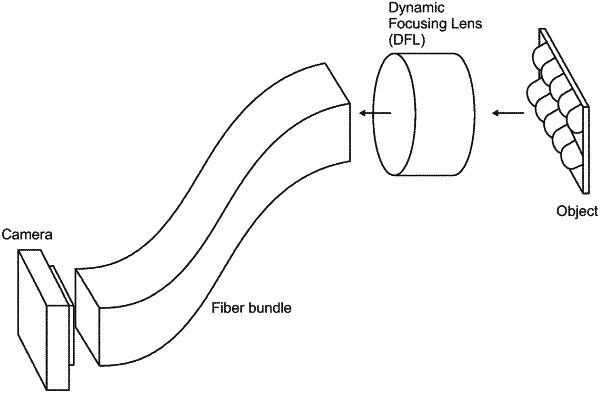| CPC A61B 5/0084 (2013.01) [A61B 5/0073 (2013.01); A61B 5/4331 (2013.01); A61B 5/6853 (2013.01); A61B 90/36 (2016.02)] | 16 Claims |

|
1. A system for the imaging and analysis of human lesions, comprising:
an illumination component emitting illumination light;
fiber-optic bundles for image capture and illumination, said fiber-optic bundles having a proximal end and a distal end and facilitates the transmission of the emitted illumination light in a direction from the proximal end to the distal end;
an imaging camera at the proximal end of the fiber optic bundles;
an electrically tunable liquid imaging lens connected to the distal end of the fiber-optic bundles in a light transmitting fashion transmitting light to the camera, the electrically tunable liquid imaging lens comprising a transparent, flexible substrate encompassing at least two liquids;
an enclosure, said enclosure housing the electrically tunable liquid imaging lens, illumination component, and the imaging camera; and
a driver accompanying the electrically tunable liquid imaging lens, wherein the driver is configured to control the effective focus of the electrically tunable liquid imaging lens, enabling the imaging camera to capture lesion images within a fraction of a second from each other across a range of focus settings in order to produce a single, sharp, all-focus image.
|